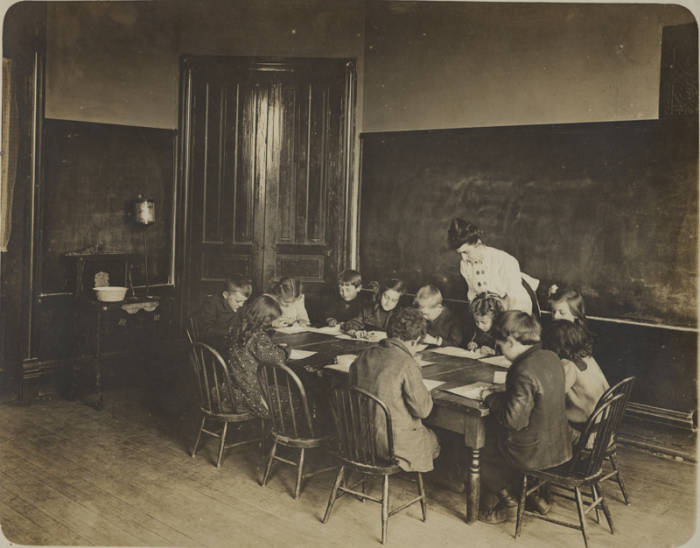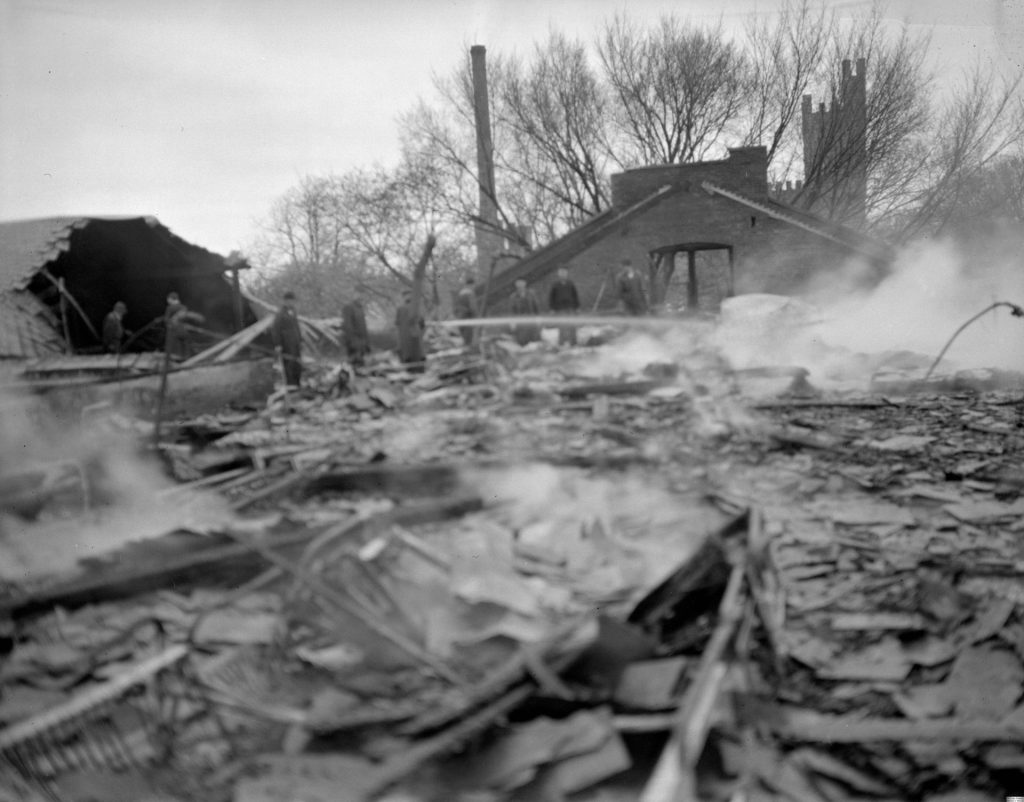From the opening of Illinois State’s first Model School to Abraham Lincoln’s connection to the Quad, historian Tom Emery explores this month in Illinois State University history.
November 2
On this date in 1857, the Model School at Illinois State opened. The purpose of the Model School, and its successors, became a critical portion of the educational experience at Illinois State.
The term “model” described its primary function, to provide a “living laboratory” for use in the training of teachers. The Model School began just four weeks after the University’s opening on October 5, 1857, and quickly gained in popularity.
Seven students in a single class group made up the first term of the Model School, but by the third term, over 50 applicants were declined simply because of a lack of space. By 1862-63, attendance had jumped to 226.
The name of the Model School was later changed to “training school,” which was used until 1914. That year, a new building was erected and named “The Thomas Metcalf Elementary School” in honor of Thomas Metcalf, the supervisor of the Training School Department for 21 years and the first individual to hold the position. The elementary and high school divisions of the Laboratory School were separated in 1947.
The original faculty member of the Model School in 1857 was Miss Mary Brooks, a beloved figure in the early history of the University. She was one of six original faculty members at Illinois State.
A respected primary school teacher in Peoria, Brooks was described by Charles Hovey, the first president of Illinois State, as having “a face so sincere and winning as to greatly impress…children loved her at sight, and the love was returned.”
Hovey added that Brooks “seemed to have an intuitive knowledge of a child’s mind at different stages of development and a genius for inventing methods to aid its growth.”
Sadly, Brooks only spent three years at Illinois State, due to gender roles of the time. She resigned with marriage plans, as she wed James Wiley on December 2, 1860, and settled with him in Brimfield. She died at age 43 on January 9, 1868.
Years later, a history of the University aptly remembered that Mary Brooks “set the standard” for the Model School “and thus perpetuated her own skill and spirit.”
November 9
On this date 80 years ago today, a fire in Fell Hall damaged the roof and attic of the building. The disaster caused a significant—though temporary—disruption to Illinois State’s contribution to World War II.
At the time, Fell Hall was home to the University’s part of the Navy V-12 program, which placed around 120,000 young men in college during World War II. Men who successfully completed the program were qualified for Navy midshipmen schools or Marine Corps Officer Candidate School, both of which led to officer commissions.
On July 1, 1943, 291 men arrived at Illinois State, and many were housed in Fell Hall. Most of the men took a rigorous academic load, and even participated in extracurricular activities.
Many of the V-12 men were finishing lunch on November 9, 1943, when an apprentice seaman detected a fire in the south corner of the attic in Fell Hall. Firemen from Bloomington, Normal, and other entities battled to limit the lower three floors of the building to smoke and water damage, though the attic sustained heavy damage. Most of the roof was also lost.
The concrete floor of the attic was credited with preventing the spread of the flames. Most of the V-12 men saved all their possessions and bedding. Two Normal firefighters were overcome with smoke, including one who was struck by a falling object.
Incredibly, the V-12 program never missed a beat. The men’s quarters were quickly shifted to McCormick Gymnasium, and the normal schedule was resumed the next day after the fire. In an interview with the Bloomington Pantagraph, Illinois State President Raymond Fairchild marveled that “it is amazing how quickly the Navy can make arrangements.”
Repair work on Fell Hall progressed almost as quickly, and a temporary roof was installed. On November 27—just 18 days after the fire—the Navy men were allowed to move back in. Some 604 seamen were sent to Illinois State during the duration of the V-12 program, which ended at the University in June 1945.
November 13
On this date in 1907, Emily Caroline Chandler Hodgin, a member of the class of 1867 and a foremost temperance reformer of the Midwest, died at the age of 69.
Hodgin was a delegate to the November 1874 convention in Cleveland that resulted in the formation of the Women’s Christian Temperance Union. It was the first anti-alcohol group operated exclusively by women, and remains the oldest, continuous female organization in the world.
In addition to alcohol abstinence and female suffrage, the WCTU also fought for fairness in child welfare, labor, age of consent, food and drug laws, prison reform, and penalties for sexual violence against females. The group also disdained the use of tobacco. Over half of the counties in the United States had a chapter of the WCTU in 1890.
Born in Williamsport, Indiana, on April 12, 1838, Hodgin taught school in her early adulthood to earn enough money to pay for her education at Illinois State. She earned a degree in mathematics from ISU in 1867, becoming part of the eighth graduating class in University history.
That same year, she married another member of the class of 1867, Cyrus Hodgin, whose longtime teaching career included a long stint at Indiana State University in Terre Haute, Indiana. During her time in that city, Emily became a powerhouse in the local temperance movement, which earned her a spot at the iconic Cleveland convention where the WCTU was founded.
She then organized WCTU chapters across the state of Indiana before her hard work drove her to exhaustion. After regaining her health, Hodgin served as secretary of the Indiana State Suffrage Association and was a trustee of a private school for underprivileged girls. She later completed a course of study in Bible and Theology from Earlham College in Indiana. Emily Caroline Chandler Hodgin died in Lafayette, Ind. on Nov. 13, 1907, ending the remarkable life of an early Illinois State graduate who was well ahead of her time.
November 19
On this date 160 years ago, Abraham Lincoln delivered his incomparable Gettysburg Address on November 19, 1863. The two-minute, 272-word speech was given at the dedication of the Gettysburg National Cemetery, which was designed by William Saunders, a foremost landscape architect of the 19th century.
Saunders is also credited with the design of the Quad, a beautiful hallmark of the Illinois State campus, as well as Oak Ridge Cemetery in Springfield, where Lincoln is buried.
The Scottish-born Saunders was introduced to Normal by the indomitable Jesse Fell, who constructed a magnificent residence in the city in the summers of 1856 and 1857. Fell hired Saunders to landscape the 18-acre property, which was so grand that it became known locally as “Fell Park.”
Fell, who took special pride in the physical grounds of the University, determined that a professional landscaper should be retained to create a virtual arboretum, and hired Saunders for the job. In 1867, Fell secured $3,000 from the state legislature for university landscaping, and the Quad was born.
A decade earlier, Saunders had been hired to design Oak Ridge Cemetery, which was dedicated on May 24, 1860, with Abraham and Mary Lincoln in attendance.
In August 1863, Saunders was brought to Gettysburg by local attorney David Wills to discuss a proposal for a cemetery to honor the dead from the epic battle the previous month. Saunders embarked on the task, and a dedication was set for November 19, 1863.
Two nights earlier, in preparation for the ceremony, President Lincoln invited Saunders to the White House for a meeting to discuss the design. Saunders recalled that Lincoln “was much pleased” with the design, and “took much interest in it.”
Saunders died on September 11, 1900. At Illinois State, the Quad remains a cherished spot on the campus, a place of relaxation and inspiration for thousands of students through the decades.
Tom Emery is a freelance writer and historical researcher who, in collaboration with Carl Kasten ’66, co-authored the 2020 book Abraham Lincoln and the Heritage of Illinois State University.





